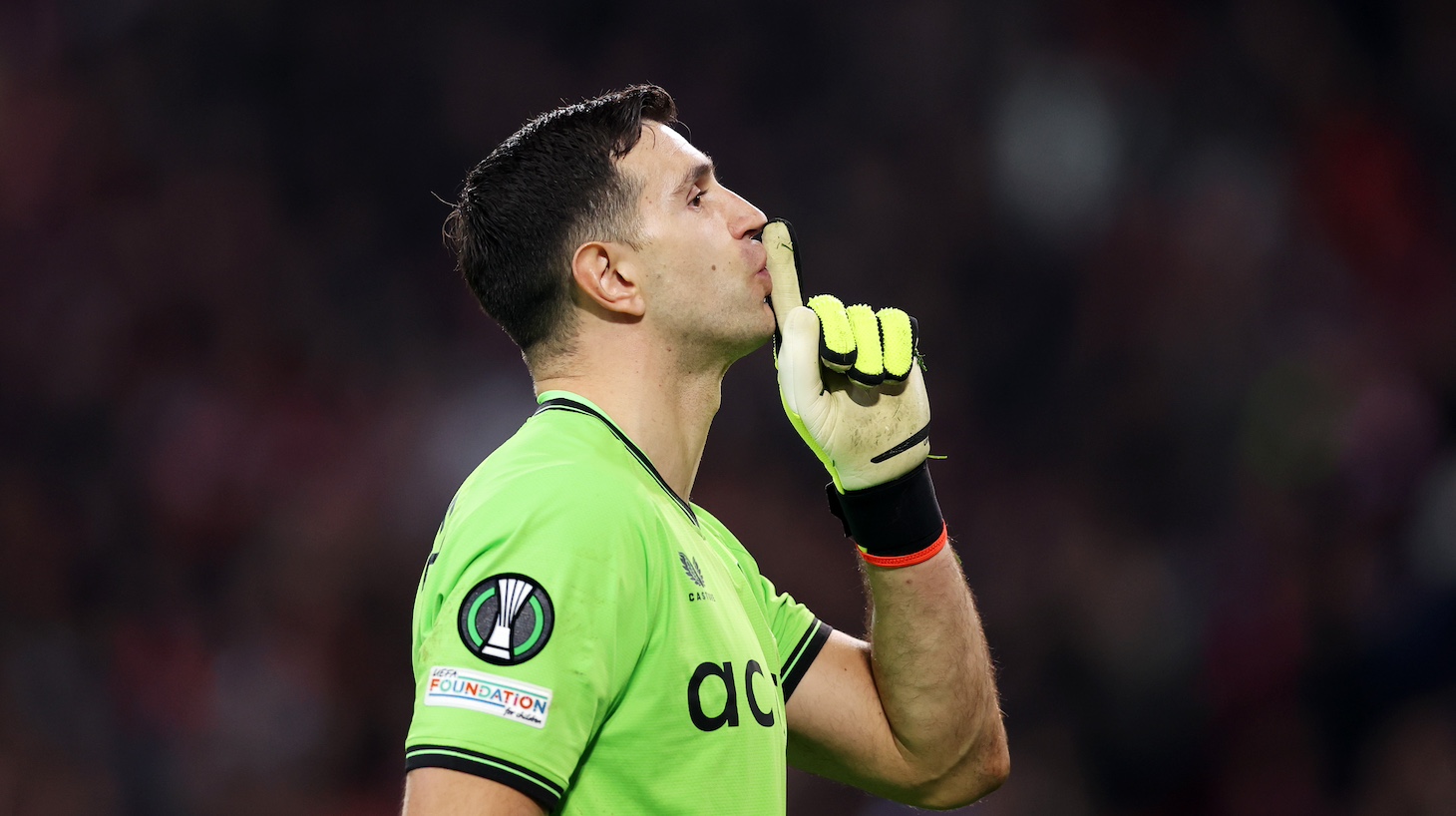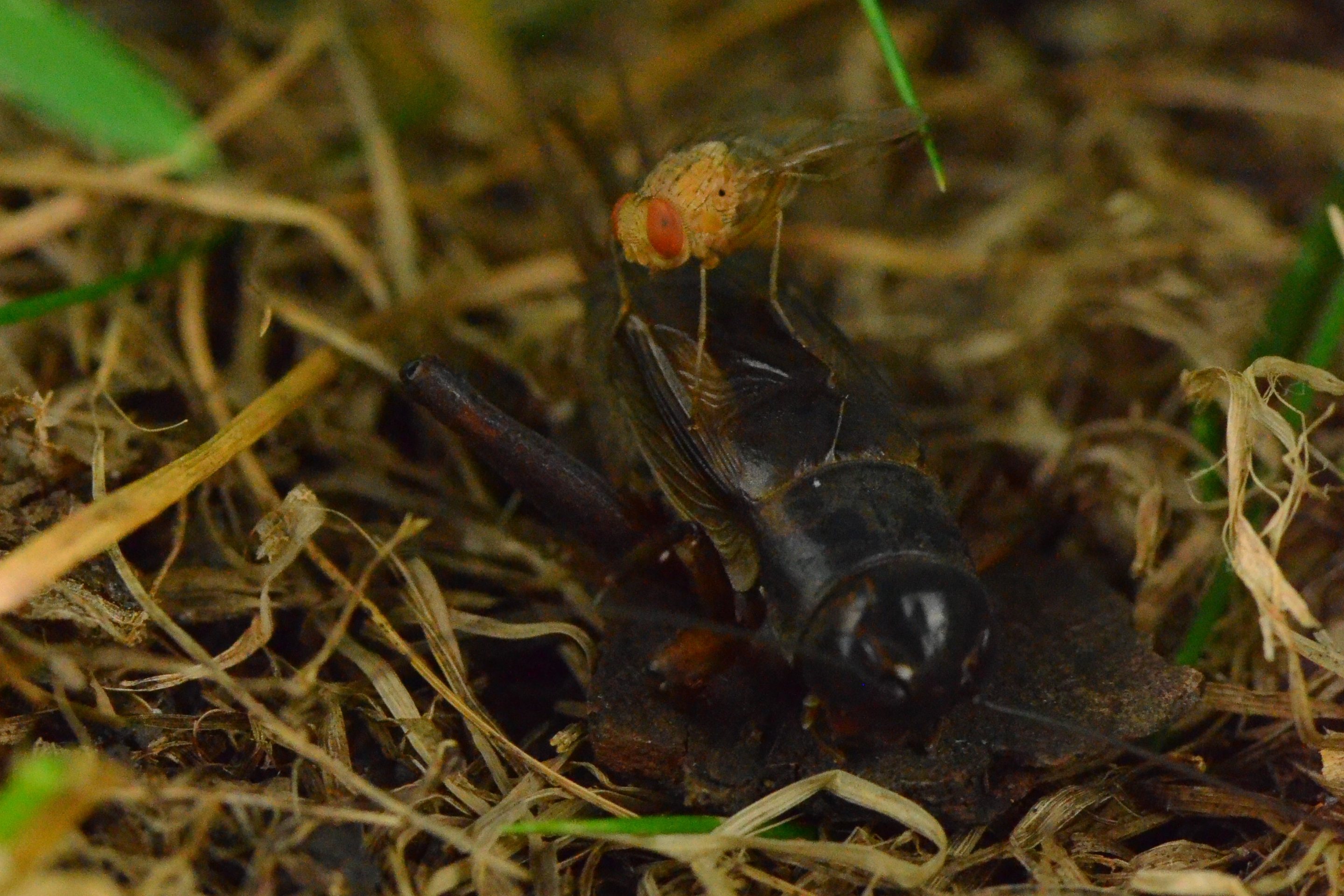In The Shadow Of The Arch Nemesis
10:41 AM EST on December 15, 2021
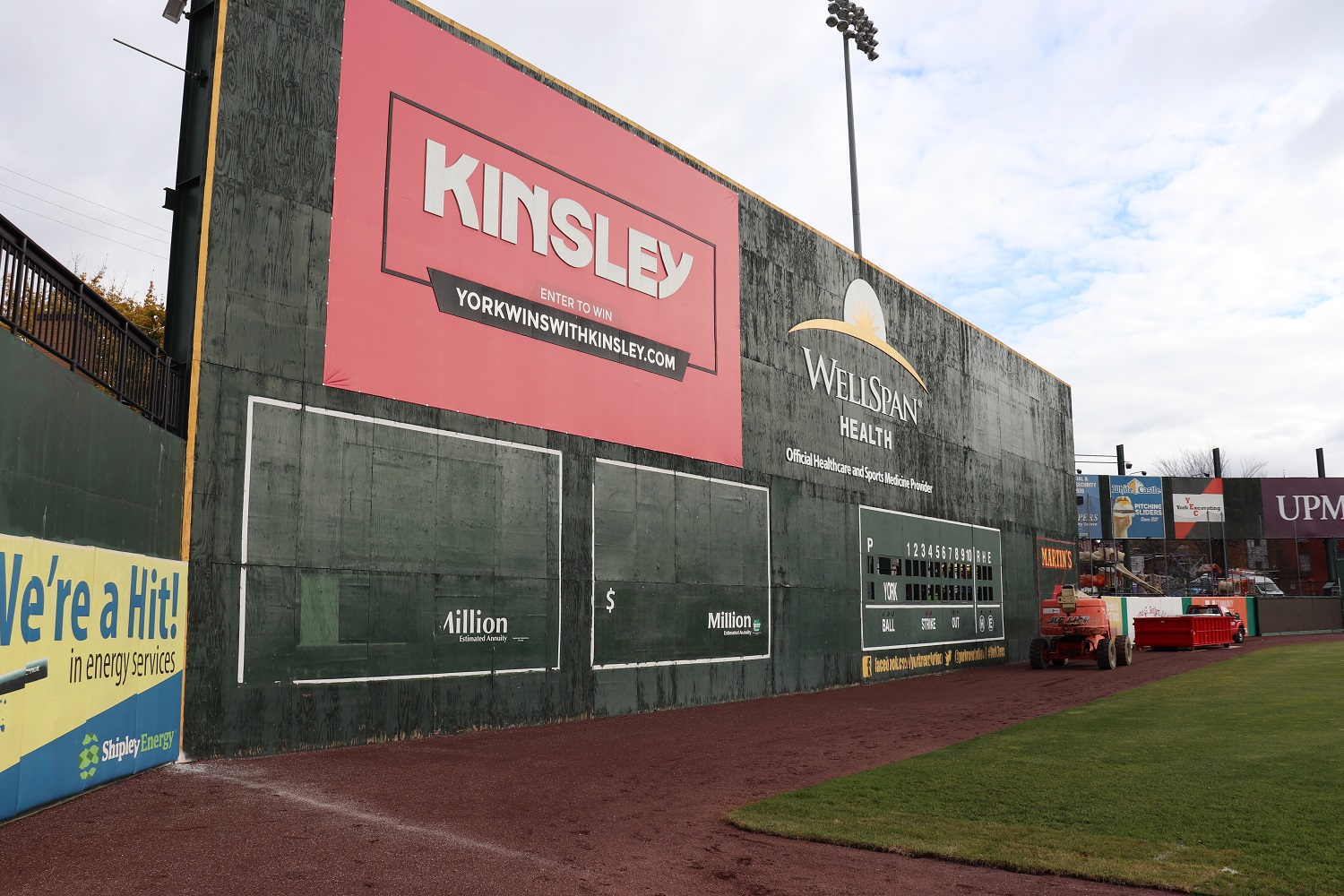
Defector has partnered with Baseball Prospectus to bring you a taste of their work. They write good shit that we think you’ll like. If you do like it, we encourage you to check out their site and subscribe.
This story was originally published at Baseball Prospectus on December 9.
Joe Coleman was washed.
This was the kid upon whom God had smiled at Malden Catholic School in Massachusetts. The clergyman who had once seen a holy light shine down upon another former pupil, Babe Ruth, saw young Joe throw and realized he’d found another pitcher worth a prayer. During one of Ruth’s visits back to the school, it’s said that the Babe pulled Coleman aside and gave him the secret to a better curveball.
But that was 15 years ago. By 1955, whatever doctrine Ruth had whispered in his ear, Coleman had either completely forgotten or lost the ability to use. Baltimore had only just let him back off the disabled list with a chronic case of “not getting anyone out,” according to a rude little bit of editorializing. The Orioles shoved Coleman onto the mound during an exhibition game with their farm team, the York White Roses, and watched the upstarts hand him his ass.
The papers didn’t have any sympathy: “[Coleman] picked the wrong night to come back.”
As one career spiraled toward its end, another was only stepping into the batter’s box. Eighteen-year-old Brooks Robinson tapped his cleats and stood in, and it only took a couple of Coleman’s best tries for Robinson to leave the park. The ball soared off Robinson’s bat, high and deep, and landed somewhere beyond the wall in left center; a long, single run that was all but forgotten among a 13-1 win.
The ball had both Coleman’s noodle arm and Robinson’s swift bat to thank for its departure. But it left the park that night for another reason: nothing was standing in its way.
York went many years without baseball after the White Roses died out. A rebirth began in the region in the early 2000s, however, when the rival Lancaster Barnstormers were formed as the latest franchise in the Atlantic League. The Barnstormers had a three-year head start on York’s own entry, the Revolution, but once both clubs were up and running, the intercounty rivalry was a natural marketing move.
The annual “War of the Roses” series started pretty lopsided, with York losing six in a row and, in May 2008, they were a strike away from a seventh. But they managed a two-strike, two-run rally in their last at-bat to both break the cycle and pull their Lancaster rivals into last place with them.
As Von Hayes, managing the Barnstormers at the time, noted, it was a devastating loss, most notably because his lead-off hitter had launched a high, whistling line drive to left center earlier in the evening, but instead of putting another run on the board, it had only been a 300-foot single. It was a theoretical run that Lancaster could have really used in the ninth when the Revolution beat them by the same margin.
But you can’t just hit home runs to left center in York anymore. Send one to right and you’re usually okay: The fences are regulation height and the merry-go-round full of oblivious children has a roof. But every deep ball yanked to where Brooks Robinson used to hit them has to be more than just a home run; it has to be a little higher, a little harder, and a little more eager to leave.
Because you may have hit one over everybody’s heads, but the Arch Nemesis gets a shot at it, too.
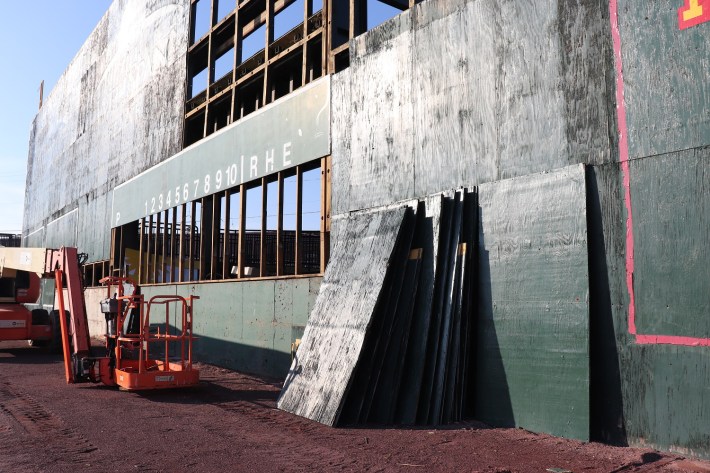
Its face is covered in open wounds struck by over a decade of attackers. In Boston, they call it a monster. Here, it’s a protector.
It emits shame and humiliation on the unprepared. A newspaper columnist once jogged out to left center and tried to shag some flies while the Revolution took batting practice in 2009. He had enough trouble navigating the wall and the visiting players doing their stretches that one of them came over and gave him a noogie.
The Arch Nemesis has protected the section of Arch Street just beyond the left-center field wall of the York Revolution’s home field, PeoplesBank Park, as long as the stadium has stood. It is by all accounts a cold and neutral party, blocking deep flies and confounding fielders on both the home and visiting sides.
And yet, the Revolution will thank it this winter with 160 replacement wooden panels and a fresh coat of paint, presumably in an attempt to gain its favor.
“It will literally be as good as new,” says York team president Eric Menzer.
The Green Monster of Fenway Park was built so that a sniveling owner could prevent somebody from accidentally catching free baseball from a nearby building. But the Arch Nemesis of PeoplesBank Park was built to prevent missiles from striking passersby and their homes. And at 38 feet tall and change, it’s bigger than the Monster’s ever been, making it superior in both size and purpose.
“There are some cases in minor league ballparks where people have built in what you might call ‘artificial irregularities,’” says Menzer. “In our case, this was not a contrived irregularity. Literally, right behind that wall is an active state roadway, plus a bunch of houses, plus a set of railroad tracks, plus a creek. There was no deeper that that left field wall was going to be than it is, which is 300 feet. Obviously, 300 feet would be way too short a dimension for professional baseball, hence the need to have a wall of some increased height.”
This isn’t completely true. The first 37 and a half feet of the Arch Nemesis are there to protect people and nature and trains. But the last seven inches are built by something more powerful than steel and wood: One hundred percent, locally-sourced spite.
“Once you start doing the geometry and get up to Green Monster proportions, well, why would you stop there?” Menzer asks, audibly grinning. “So our wall is seven inches taller than the Green Monster.”
Fewer people have heard of the Arch Nemesis than the Green Monster, but the Red Sox simply cannot say they have the tallest wall in professional baseball and be right. Almost makes it silly that they have a big stupid wall at all, if it’s not going to be the biggest. Although it makes sense, given its origin, that it’s the color of money.
Menzer’s previous job was as the senior vice president of the construction management company that built PeoplesBank Park (previously named after two other banks). One of his favorite parts of his job is giving tours of the stadium, and when he leads groups out to the wall, he has them stand at the base of the Arch Nemesis and turn their heads skyward to watch it stretch into the heavens.
“After fifteen years, the plywood was curling up, there were spots where you could see through the wall. It was hard to get it to the point that it was hard to deal with, hard to get it to hold tape, hard to mount advertising on it. Even had some cases where the ball might not have come off completely true. It was definitely time to start over again.”
Right now, the functionality of the Arch Nemesis is gone. The mounting hardware and structure are gone. The hand operated scoreboard is gone. The wood panels are stripped off. The “wall” part of the wall isn’t there. It’s just a metal grid, powerless to stop baseballs from passing right through it and thunking off the Arch Street pavement or the head of a Codorus Creek rock bass. In time, its skeleton will be sandblasted, rebuilt, and put back to work. But now would be the perfect time to crank one to left center at PeoplesBank Park. Too bad it’s the middle of November.
When it was still being originally constructed, the public was fearful of its rise. And why wouldn’t they be? A monolith was ascending right before them, one built with purpose and hubris. What if it offended the baseball gods? What if it blocked out the sun? What if birds flew into it and held up traffic as their carcasses piled up?
The local paper suggested everyone remain calm.
“After all, we haven’t even seen it yet,” wrote journalist Brad Jennings in 2007. “Haven’t seen what it looks like; haven’t deemed it pleasing or ominous; haven’t observed how it plays; haven’t judged its character.”
As the people got to know it, so too did the players who manned left field at PeoplesBank. After all, the hardest part isn’t hitting one over the Arch Nemesis. Defenders standing in its shadow learn quickly to position themselves closer to the infield in preparation for how the wall will choose to spit a ball back out. As it aged over a decade and a half, this became harder as the ricochets may have been coming off a section of deadened or warped plywood, defying the natural order set by physics.
There are outfielders who mastered it; who stared 38 feet up in the air and with some mental calculations, as well as some trial and literal errors, learned to play with the Arch Nemesis, rather than against it.
Matt Esquivel arrived in York in 2008, followed by suspicious glares through window blinds. Drafted by the Braves in 2001, the 25-year-old had been suspended three times since 2004.
“Disciplinary reasons” was the most common explanation.
Once stories about Esquivel’s mysterious past appeared in York newspapers ahead of the 2008 season, it didn’t take long for those suspicious glares to evolve into strongly-worded letters.
“Another shady character for the kids to admire,” read one letter to the editor. “Bad precedent for an outfit that’s trying to win local hearts.”
Whatever Esquivel did, it was why he was in York, playing for an unaffiliated independent club and not the Braves. From a baseball standpoint, he was a get for the Revolution. He had been a hot-hitting Braves prospect and would one day break up a no-no with a single off Roger Clemens. It would only be the second inning and Clemens would be 50 years old at the time, but still.
Guys come to the Atlantic League to find their way back. It’s why executives like Menzer dazzle the public with quirks like a big wall in the outfield, because the wall isn’t going to have a solid year and get signed by a team in Korea. The roster churn is why teams like the Revolution exist, so players like Esquivel can put up some good numbers and get a job somewhere else.
But if Esquivel was going to impress anyone playing in York’s outfield, he was starting at the bottom. Or more accurately, the base.
It was a process: Go out there in left by the Nemesis, wait for the ball to find you, watch it hit the wall, and make your best guess. As time goes on, your best guess gets better.
The danger was in the caroms, but as Esquivel turned his back to the infield to make a play, he saw that the ball routinely went to the right no matter where it stung the Nemesis. He learned the timing of making a play with his back to the base runner and knowing where to put his crosshairs when he spun around. The result was surprised runners sliding into a tag at second or slamming the brakes around first to keep a potential double play in order. He also taunted the Arch Nemesis by crushing batting practice balls over it.
Menzer has seen this many times. “The main thing that it causes in our ballpark for players who are unfamiliar with it is trying to stretch singles into doubles. There are frequently occasions where a base hit to left field does not score a run from second; there are frequently occasions where if you play a ball cleanly off the wall you can hold a double to a single, or you can lure an unsuspecting player into taking second base and gun him down pretty easily.”
Second guessing will get a base runner killed. And that’s exactly what the Arch Nemesis does; it invades the minds of everyone playing near it or hitting toward it, and it takes prolonged exposure and rapid adjustment to be the one who does so skillfully every night.
“You can’t do anything until the ball gets to you,” Esquivel told the Daily Record.
Esquivel’s path never took him back to the majors. He played in Mexico and around the Atlantic League until he was 29. But he at least provided evidence that the Arch Nemesis was not invincible, indirectly passing a game plan into the hands of the next left fielder at PeoplesBank Park. On the York Revolution, the names change, but there’s always someone out there, doing battle with a wall bigger than a Monster.
But after all the prep, experience, or panicked guessing in the world, this is still baseball. Chaos lives in every game, waiting for a moment to strike; as do right-handed power hitters. And even the Arch Nemesis can’t stop them all.
“I’ve seen any number of game-winning homers go over that wall and you know it the moment the ball leaves the bat,” Menzer says. “An experienced right-handed hitter with an uppercut swing can take advantage of the presence of that wall.”
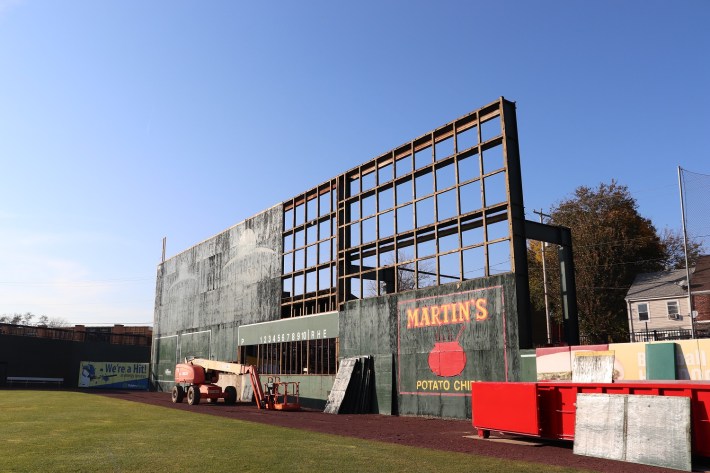
You do the workouts. You run the sprints. You talk to trainers. You make adjustments. You get enough sleep. You run the sprints. You watch your diet. You talk to coaches. You take all the BP somebody is willing to throw. You’re sick of sprints. And then, one day, somebody grabs you by the arm and tells you that people are watching who can change your life.
“My sophomore year, our coach was telling me… he’d talked to some scouts. There comes a moment when you learn you have a chance at getting a chance to play pro baseball. You don’t know if it’s going to happen, but you know it’s a possibility.”
The right people were watching first baseman Nate Espy, but there were still a lot of barriers between him and the big leagues. Espy wasn’t fast or eye-bulgingly skillful with his glove. He knew, even then, that he was going to have to crush his way into the majors.
“When I signed a professional contract with the Phillies, it was clear to me that was what my role was going to have to be: A middle of the order hitter that could drive in runs. That was what I always knew I’d have to do to survive.”
Espy wasn’t playing in the majors, but there was nothing minor about him. As a six-foot-three, 215-pound college freshman, he’d led the nation in home runs with fearsome power that all but required the Southern Conference to name him MVP. Drafted by the Phillies, one of his best days at double-A Reading was the time in 2003 when he went 5-for-6 with a grand slam. It was also one of his last days with the organization.
He was swapped to St. Louis and, the following year, Seattle. He wound up in Sacramento on a team with Milton Bradley. He was voted “most inspirational” by his teammates. He rode buses and ate peanut butter for almost ten years.
But by 2007, after the Revolution had signed him, the ten-year minor league veteran was starting to realize that age is not, in fact, just a number; it’s a number that dictates your limits and how much Advil you have to take after disregarding them. And so that somber, reflective age of 29 arrived and Espy began thinking about the end after so many years of being stuck at what felt like the beginning. In between seasons, there’d been some instructional jobs he’d taken, teaching kids how to put a baseball on the moon, and, well, you know the rules: No one’s allowed to turn thirty without feeling like they have to make a change.
Atlantic League teams are a good staging area for players still trying to make up their minds; when a guy still has something, but just what it is and how much of it is left is yet to be determined. Some at-bats on this independent circuit can establish whether it’s time for a minor league vet to hang it up, or for a big league club to notice and give him some work. And by 2007, as Espy was thinking things over, it just so happened that a new Atlantic League franchise was looking to fill out its inaugural roster.
Espy went to spring training with the Revolution and his power was staggering immediately. In one game, he clobbered a home run, then came up a few innings later and crushed another one to the warning track. A York Daily Record photographer caught one of his bashings as he was in mid-swing and they dropped it in the day’s sports section. Espy’s massive forearms rippled across the page as he unloaded on a pitch, the brim of his helmet cocked over his eyes like a superhero protecting his identity.
Tall and friendly–everybody got along with Nate Espy–he could be spotted reading the Bible or drawing a cross in the dirt when he played first base. Despite his raw power, he didn’t take big hacks in batting practice and turned down an invitation to the Atlantic League Home Run Derby that year, even though he’d have probably won it.
Espy was aware that all power has its limits, and not all of them are 38 feet tall. He wanted to save his hardest hit balls for when he needed them most. Those moments arrived at least 22 times throughout the 2007 season, and Espy led his squad in homers, the only Revs player to crush over 20.
But back in April, as Espy and the Revolution came north for the start of the regular season, York had been waiting to watch a professionally hit home run in their town for over fifty years. Then they waited 35 more games as the Revolution’s ballpark construction was delayed. Then they waited thirty more minutes because all the pregame pageantry pushed back the opening night start time.
Then they waited six more innings.
For the first game at Sovereign Bank Stadium, 5,500 people filed into the stadium, contributing to the record-setting average game attendance in the Atlantic League that year. Old men who’d seen Brooks Robinson play for the White Roses ushered their grandkids in early for autographs and wept when Robinson threw out the first pitch.
Nobody minded much that the stadium still had a few holes. Tonight, the Revolution were hosting a ball game whether the ballpark was ready or not.

“It will be a great stadium,” said a York player outside one of the detached trailers serving as a locker room.
At least they had gotten that 38-foot wall in left center field up in time.
Espy came to the plate in the sixth. With the Revolution having played their first few home games at Campbell’s Field in Camden, New Jersey, he hadn’t formally met the Arch Nemesis yet. It faced home plate as it always would; expressionless, imposing, and unable to feel pain.
“I remember Fred McGriff said something one time like, ‘There’s so many 0-for-4s… especially over a 140-game season,’” Espy says. “There’s a lot of low points.”
Six innings into their history, the Revolution still didn’t have a first franchise hit, run, or homer. There’s a first time for everything, but rarely all at once.
“…but when you connect in that moment,” Espy says, “it’s like, man, this is why we prepare. To have this success. The hours you put in. The sensation when the ball comes off the bat.”
He put a charge in one and it soared to left center; a little higher, a little harder, and a little more eager to leave. It was opening night and the Arch Nemesis was 0-for-1.
“I believe it was a changeup,” Espy confidently recalls. “Just right out over the middle of the plate. I didn’t hit it great–but I got it up enough.”
Baseball had come back to York, and it was currently rolling down Arch Street. But as always, in a 140-game season, there was plenty more of it to come.
“And in the flash of an eye, you’re jogging around the bases,” Espy says, “thinking about your next at-bat.”
Like a home run, the lifespan of a slugger is violent, thrilling, and brief. Espy left town after that 2007 season and waited patiently for a big league affiliate or a lucrative overseas deal. When the right one never came, he hung up his cleats and eventually became an elementary school principal in Georgia.
York had been ready for baseball to come back for half a century. The night Espy hit one over the Nemesis, he crushed the last barrier between the town and its team, igniting the cheers of fans and neighbors, bringing history back to life, and letting baseball return to a place that had long missed it. Now the evenings in this tucked-away York County spot next to Codorus Creek would have a familiar glow of stadium lighting and the telltale thunk of ball hitting wall for many summers to come, all as the ghost of Joe Coleman hovers somewhere over left center field, watching no-doubters run into 38 feet of doubt, and thinking, well, shit… wouldn’t that have been nice.
If you liked this blog, please share it! Your referrals help Defector reach new readers, and those new readers always get a few free blogs before encountering our paywall.
Stay in touch
Sign up for our free newsletter
